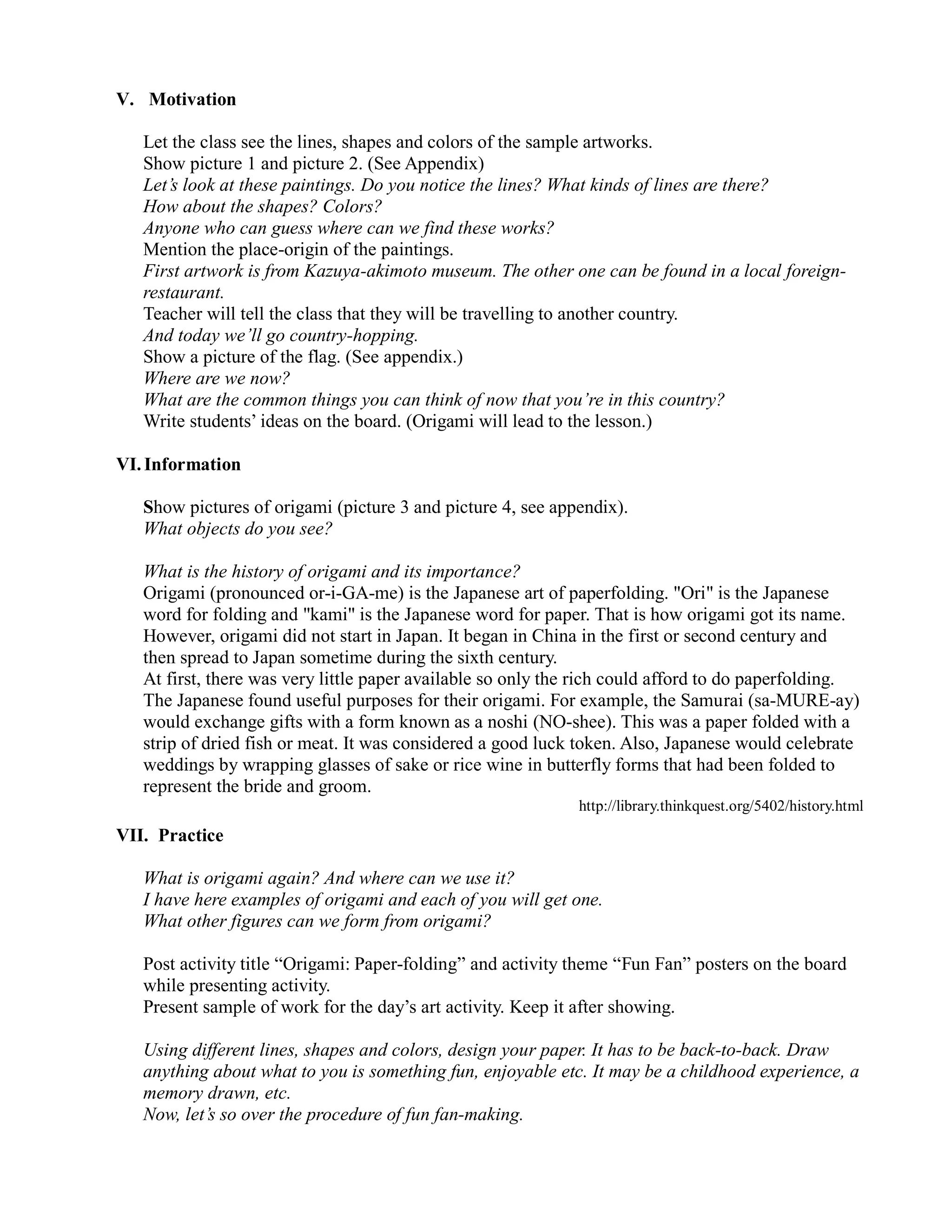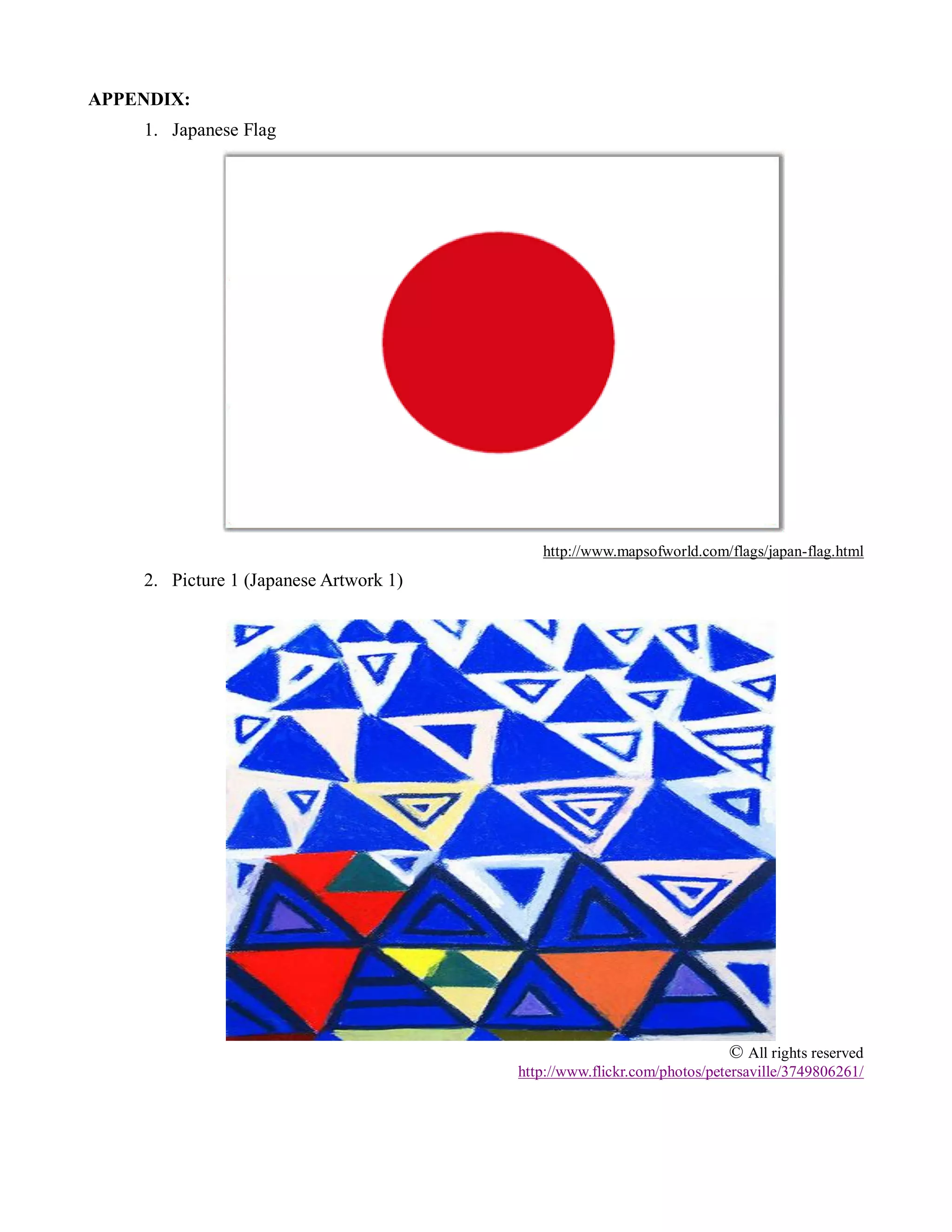This art lesson plan targets 4th grade students. The objectives are for students to recall elements of art, recognize them in Japanese artworks, and learn the history of origami. Students will create a personalized origami fan applying lines, shapes, and colors. The lesson introduces origami and its importance in ancient Japan. It demonstrates how to make an origami fan and evaluates students' creative works. The goal is for students to understand origami's uses and appreciate it as an art form.





